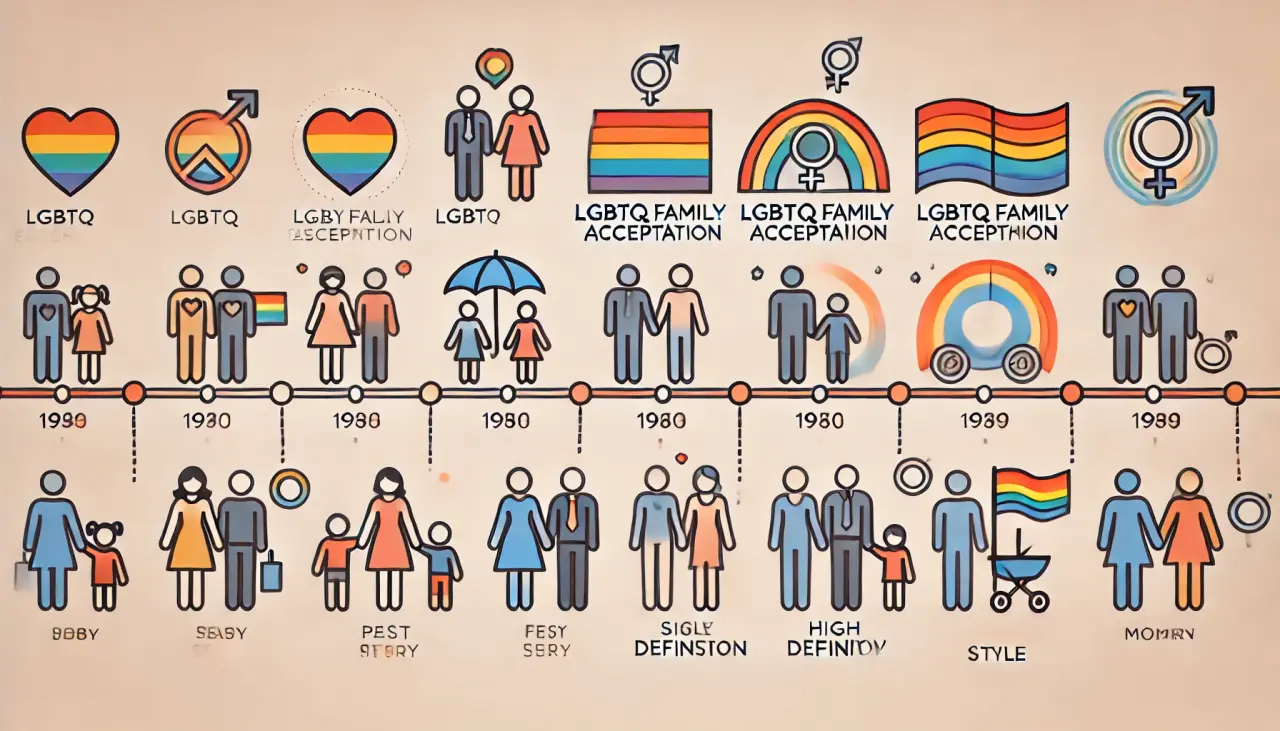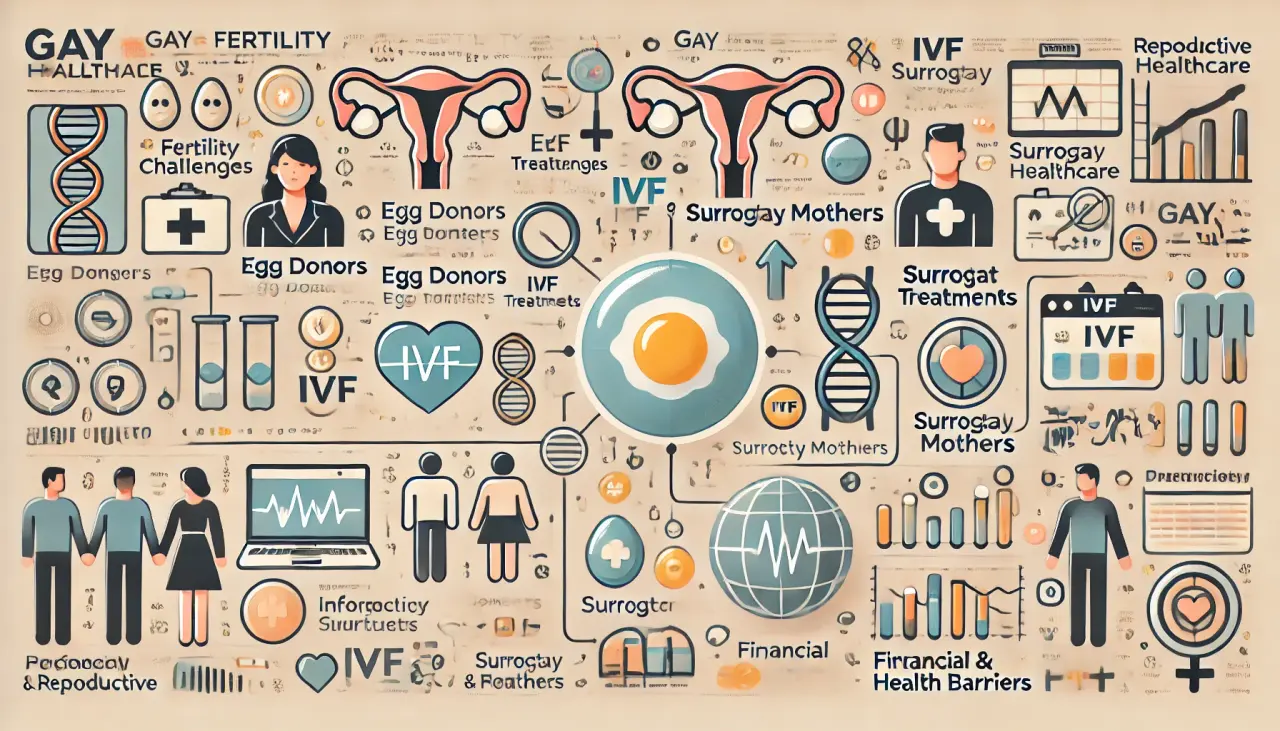
Surrogacy for Gay Men: Why IVF and Surrogacy for Gay Couples is Complex and Expensive
For most people who aspire to become parents, the dream is to have a child with whom they share a genetic connection. However, for gay men, this process is both complex and expensive. To achieve this, they must work with IVF doctors, surrogacy lawyers, gestational carriers (also known as surrogate mothers), and egg donors (a term often referred to disparagingly as “egg sisters,” a term I personally find uncomfortable). The entire process typically takes about two years and can cost at least $200,000 USD per child. Additionally, gay fathers generally do not qualify for fertility benefits under most health insurance plans, though this situation is beginning to change.
Dr. Brent Monseur, a medical doctor, helped lead a study documenting how gay men use assisted reproductive technology (ART) to build their families, including how many children they hope to have and the frequency of their successful efforts. Dr. Monseur is currently completing his postdoctoral research in reproductive endocrinology and infertility at Stanford University School of Medicine, and he discussed the study, which was published in the Fertility and Sterility Report on August 4, 2022.
1. How Did This Study Come About?
Many LGBTQ individuals (including myself) have heard this phrase after coming out: “You will never have a complete family.” Fortunately, this statement is becoming less common, but for a long time, it reflected a widespread societal norm and a misconception that reproductive science was underdeveloped, preventing LGBTQ individuals from becoming parents.
As a gay person raised in a conservative environment, this was a question I had to consider. I wasn’t sure if I wanted children, but I certainly didn’t want anyone telling me I couldn’t. So, I started researching how to build a family. As a young person, it was difficult to find information on this topic. There was nothing in the library, and very little on the internet. I thought, perhaps I should seek out doctors.
Before medical school, I worked with infertility specialists at Johns Hopkins University during my graduate studies. I asked them, as a gay man, how I could start a family. They explained the entire process, and it was incredibly complicated. They also said, “You can’t be a patient here. We don’t take care of gay men… but we should care about their feelings.” That was the moment I decided: “I will go to medical school and become a doctor who provides reproductive healthcare for all LGBTQ individuals.“

2. Your Paper Provides Historical Context, Explaining How Societal Attitudes Toward LGBTQ Families Have Changed. Can You Summarize?
The simplest way to put it is that LGBTQ families have gone from being a paradox to a possibility. We have moved from being condemned and pathologized to being accepted by more people.
Much scientific literature has focused on whether children of LGBTQ parents fare well. There is no data suggesting that parents being of a sexual or gender minority negatively affects children. Today, not only is LGBTQ reproduction accepted in society, but there are also people advocating for LGBTQ families. In my field, professional organizations that create guidelines for infertility specialists state that everyone should have access to infertility treatment. Many fertility clinics that previously did not treat everyone, including Johns Hopkins University, now offer treatment to all individuals.
But barriers still exist. Some fertility clinics in the U.S. still do not accept LGBTQ patients, and most health insurance plans offering fertility benefits define infertility as “a heterosexual couple attempting to conceive for 12 months without success.” A recent lawsuit was filed by a gay couple in New York claiming that these standards are discriminatory.
3. Why Must Gay Men’s Experiences with Fertility Medical Care Be Reflected in Scientific Literature?
Most of the work in reproductive medicine has been focused on infertile heterosexual women. As physicians, we have no knowledge of the unique characteristics of gay men as reproductive health patients, nor do we know basic information such as their demographics, clinical decision-making patterns, or outcomes.
Our paper used data from a small number of fertility benefits providers that offer reproductive insurance for gay men. This gave us a window into the situation of 119 gay men nationwide, including five single men and 57 gay couples, all of whom received specialized fertility benefits. While the study size is still relatively small, it is the largest study to date on the reproductive process of men in the U.S. I often tell my patients, “Actually, there is no research on how to do this. Your decisions and outcomes have already been researched.“
Based on our data, the fertility success rate for this group is quite high. During the study, about 70% of the participants completed egg donation and embryo transfer to a gestational carrier (surrogate mother), with a live birth rate of 85%. It’s important to note that our data reflects the experiences of those who can afford reproductive healthcare because their employer-sponsored fertility benefits covered these services, which is still an unusual situation for gay men.
These data laid the foundation for a recently approved grant application, and we will use it to conduct a larger population study, collecting information on about 2,000 cases of gay male embryo transfers annually.

4. What Was the Most Important Finding in Your Research?
The fertility success rate for gay men is exceptionally high, which is unusual in reproductive medicine. Many people see infertility doctors because they have underlying reproductive health issues. Gay male couples typically have two potential sources of eggs: a young egg donor and a surrogate mother who has already successfully carried a pregnancy. I believe that, due to these medical factors, the birth rate for gay male couples could serve as a modern standard for assessing IVF and surrogacy for gay couples.
Another point, consistent with research on lesbian and bisexual women, is the high rate of twin pregnancies. In our study, the rate of transferring more than one embryo to a gestational surrogate was much higher than the care standard, which strongly recommends transferring only a single embryo.
We recognize that this may be because many gay men want twins or ultimately hope for two children, so reproductive doctors may transfer two embryos to help the patients save money and undergo only one fertility treatment. But we need to ask: Are we putting the surrogate at unnecessary risk for a twin pregnancy? Are we putting the gay couple at unnecessary risk of having their babies in the neonatal intensive care unit? I believe that better fertility insurance for LGBTQ reproductive care will be a safer and healthier solution to address economic pressures.
Before I became an obstetrician, I thought this was a matter of health access—if gay men want twins, we should respect their autonomy. But once you’ve handled complex pregnancies and understand the risks, you realize that your goal is not to rush. Our goal is to have one healthy baby at a time.
5. How Does Having a Gay Doctor-Scientist Answer Questions About This Parent Group Help?
Research shows that when doctors are of the same race as their patients, treatment outcomes are better. I believe the same applies to LGBTQ individuals. Now, as a researcher, I have patients who specifically seek me out for care. It’s not because I’m the best doctor, but because I’m gay, and they want a gay doctor.
This is also important because I am publishing the first research report in this field. Sometimes, if you don’t have life experience, you don’t consider what people in the same community are doing or what’s important to them. Without that, this work wouldn’t be possible.